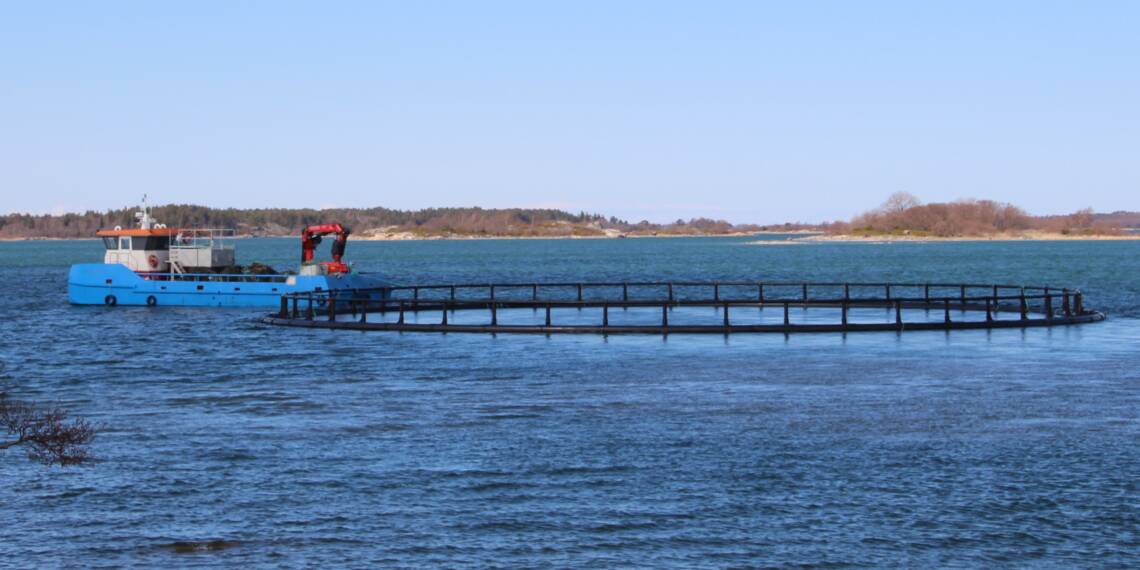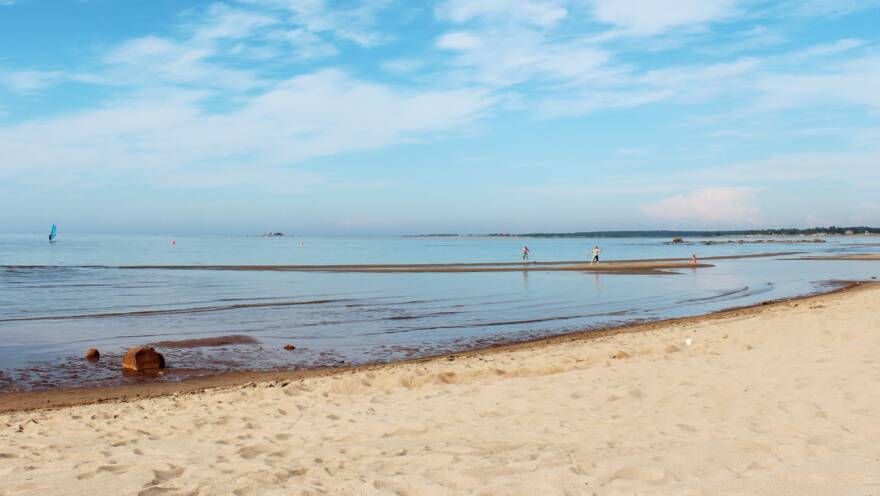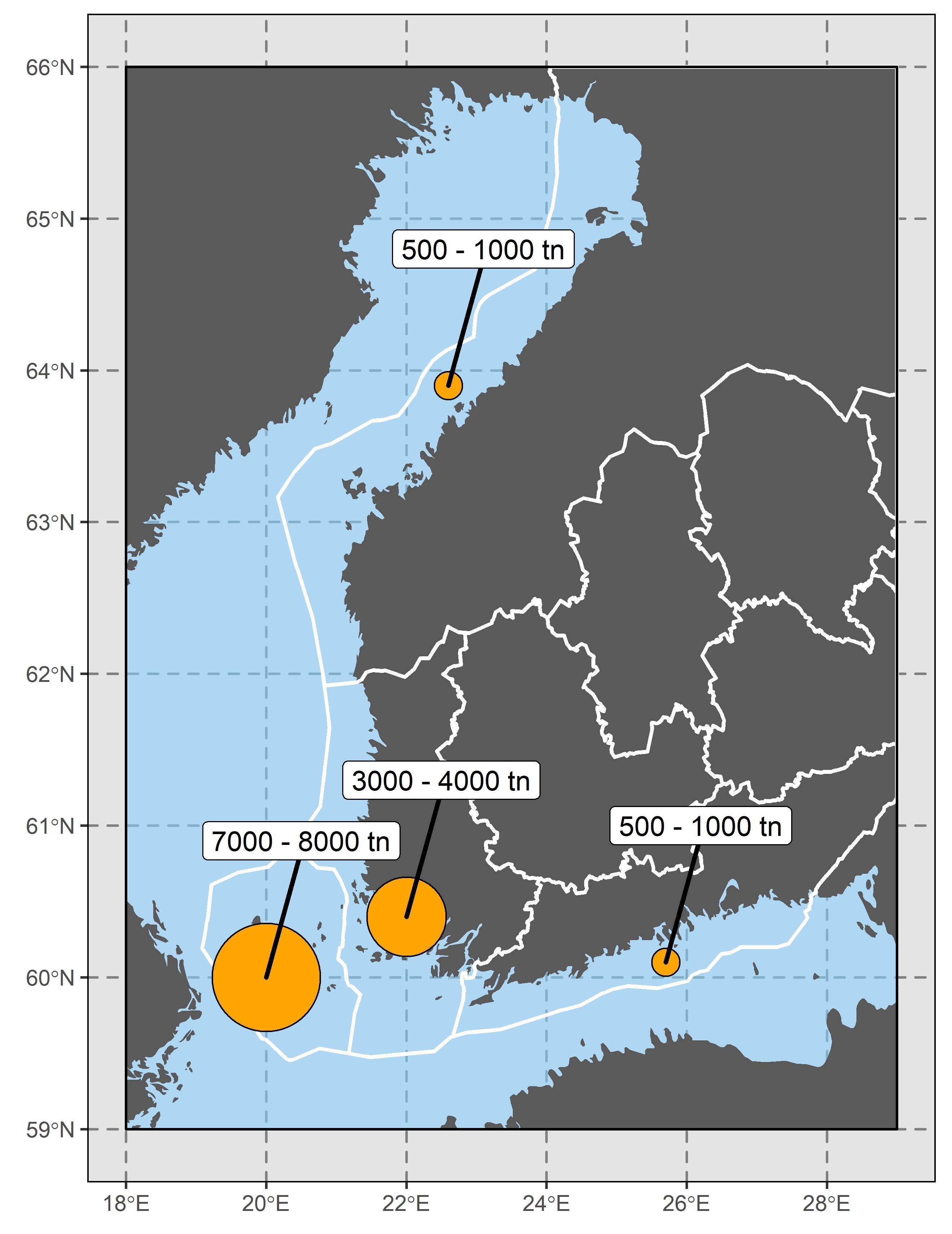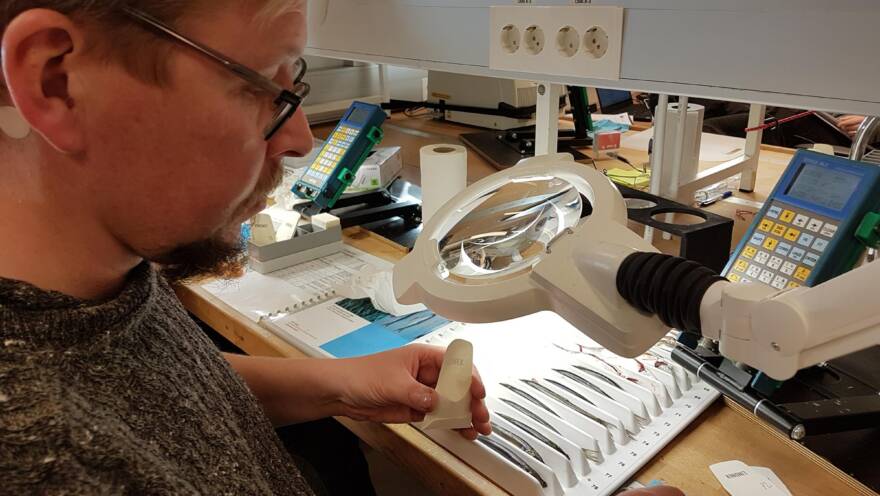
Fish farming in Finland
Fish farming meets the increasing demand for fish. Most of the domestic rainbow trout and whitefish consumed are farmed in Finland’s marine areas. The majority of domestically farmed fish is rainbow trout. There are about 120 fish farms in Finland’s marine areas.
In marine areas, fish are typically farmed in net cages for two growing seasons. The fry are brought to the sea in spring or autumn. At the end of the first growing season, rainbow trout weigh a few hundred grams. After the second growing season, rainbow trout are gutted for shops and processing, typically weighing slightly over two kilograms. Whitefish are sold weighing about one kilogram.
The production of farmed fish moves to the open sea
Approximately 13 million kilograms of fish are farmed annually in Finland’s marine areas. In the late 2010s, production began to slowly increase due to new environmental permits granted for open sea areas. The regional placement of fish farming is guided by the national aquaculture location plan prepared by the Ministry of Agriculture and Forestry and the Ministry of the Environment. Production is expected to continue growing in areas where farming conditions have been deemed suitable according to the marine area location plan.
The last growing season facilities are located in the shelter of the outermost islands or even completely in the open sea, where nutrient dilution conditions are good. Larger production quantities have recently been granted to open areas because environmental impacts have been found to be minimal. The specific load of fish farming has decreased by 60-70% in recent decades thanks to research and development. It is still necessary to have fry farming and winter storage places for fish near the coast. The nutrient load of these activities is small.
-
 Find out more
Find out moreThe Blue Bioeconomy
Using Baltic Sea feed reduces the nutrient load to the Baltic Sea
Fish are fed with feed pellets. Increasingly, plant-based raw materials are used in feeds. Most of the fish used in feeds are herring and sprat caught from the Baltic Sea. Environmental toxins, such as dioxin, are removed during the production of fishmeal and fish oil from these fish. This type of feed has begun to be called Baltic Sea feed. The use of Baltic Sea feed recycles phosphorus and nitrogen from Baltic Sea fish stocks into farmed fish, thus reducing the nutrient flow from outside the Baltic Sea.
WWF recommends consuming Finnish rainbow trout
Due to the reduction of environmental impacts of fish farming, WWF Finland has classified domestically farmed fish on the green list of recommended fish species. Domestic rainbow trout is a more responsible choice than Norwegian farmed salmon, not only because of its small environmental impact but also because Finland’s marine areas do not have the salmon lice that pose a significant threat to Norwegian salmon farming and wild fish stocks. Nevertheless, over 70% of the salmon consumed in Finland is imported.
Aquaculture and fish farming are globally growing industries
Aquatic farmed raw materials, especially fish, are an important part of a healthy diet due to their beneficial omega-3 fatty acids. Various wild and farmed fish should be eaten at least twice a week according to recommendations.
Natural fish stocks alone cannot meet the ever-increasing demand for fish. The farming of fish, shellfish, and mollusks is the fastest-growing food production sector in the world. More than half of the fish consumed by humans comes from farming, while the share of fishing decreases year by year.
Fish are efficient feed utilizers. As a result, the carbon footprint of fish farming is small compared to other animal production. The area suitable for food production on land is also decreasing, and therefore the need for aquaculture production in marine areas will increase significantly in the future.
Fish farming has significant economic importance for many Finnish archipelago municipalities. It provides year-round jobs and brings tax revenue to maintain services. Fish farming strengthens the entire fisheries sector by offering logistical services and demand for fishing companies, as well as enabling year-round operations through the availability of raw materials for processing companies and fish trade.

-
-
 Find out more
Find out moreFish stocks monitoring and research

